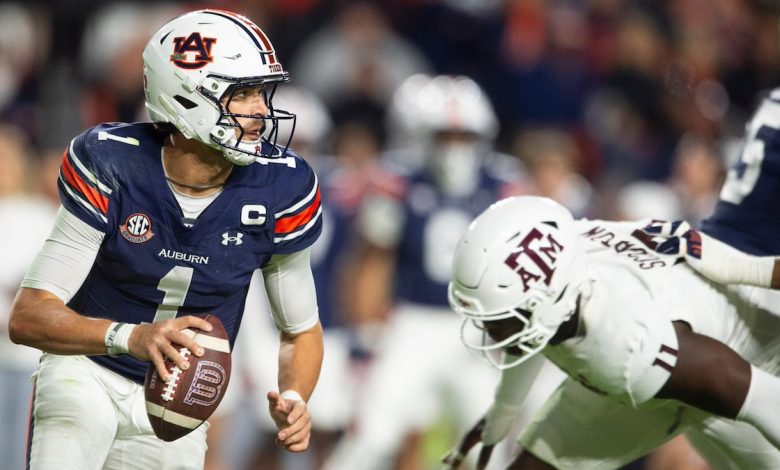Auburn’s loss to Texas A&M was characterized by poor rebounding (24 offensive boards for A&M), missed defensive stops, and absent leadership.

Auburn’s defeat to Texas A&M on March 4, 2025, was an eye-opening loss that caught many by surprise. As the number one ranked team in the country, Auburn entered the game with high expectations, but they were quickly exposed by a Texas A&M squad that played with great intensity and capitalized on Auburn’s weaknesses. The game ended with a score of 83-72, and while several factors contributed to the defeat, it was the statistical breakdown that truly painted the picture of Auburn’s struggles. Key statistics, including poor rebounding, missed defensive stops, and a lack of leadership, were all glaring issues that ultimately determined the outcome.
In this analysis, we will explore these statistics in greater detail, breaking down what went wrong for Auburn and how Texas A&M managed to exploit the Tigers’ vulnerabilities. By looking closely at Auburn’s performance in these areas, we can understand why they fell short of expectations in this matchup.
1. Rebounding Woes: A Key Factor in Auburn’s Loss
One of the most critical statistics that characterized Auburn’s defeat was their inability to secure rebounds, especially on the defensive end. Auburn’s poor performance on the glass was a glaring issue throughout the game. Texas A&M dominated the boards, grabbing a total of 24 offensive rebounds compared to Auburn’s nine. This disparity in offensive rebounding was a huge contributing factor to the Aggies’ success, as it provided them with numerous second-chance opportunities and ultimately allowed them to control the tempo of the game.
Second-chance points are often a decisive factor in games, and in this contest, Texas A&M capitalized on this by converting many of their offensive rebounds into easy baskets. Auburn’s defense, already struggling in other areas, was unable to prevent the Aggies from capitalizing on these extra possessions. It was clear that the Tigers were physically outmatched, particularly in the paint, where Texas A&M’s players were able to assert their dominance.
The lack of effective boxing out and positioning by Auburn’s players allowed Texas A&M to establish a strong presence on the boards. This is an area where Auburn typically excels, but on this night, they were unable to match the Aggies’ energy and tenacity. Coach Bruce Pearl acknowledged this after the game, highlighting the fact that Texas A&M physically manhandled his team. Rebounding is an area that is often overlooked, but in this case, it was a significant factor in Auburn’s inability to get stops and prevent easy scoring opportunities.
Auburn’s lack of rebounding presence was compounded by the absence of their starting point guard, Denver Jones. Jones, known for his defensive tenacity, would have been a valuable asset in limiting Texas A&M’s second-chance opportunities. His leadership and hustle on both ends of the floor were sorely missed, and this contributed to Auburn’s struggles in securing rebounds. Without Jones’ energy and defensive awareness, Auburn’s big men and guards alike struggled to secure critical boards.
2. Defensive Struggles: Missed Defensive Stops
Alongside the rebounding woes, Auburn’s defense was a major issue in their loss to Texas A&M. Throughout the game, the Tigers had difficulty getting stops and preventing the Aggies from scoring efficiently. Texas A&M shot 46.9% from the field, including 35.3% from beyond the three-point line. While not an overwhelming shooting percentage, it was enough to exploit Auburn’s defensive breakdowns and give the Aggies the upper hand.
Auburn’s defensive struggles were especially evident when it came to guarding the perimeter. Texas A&M’s guards, led by Wade Taylor IV, were able to get open looks from deep and capitalize on Auburn’s defensive lapses. Taylor, in particular, played a key role in the Aggies’ offense, scoring 16 points and hitting timely shots when Auburn threatened to mount a comeback. His ability to get open looks from three-point range and attack the rim exposed Auburn’s inability to close out on shooters and rotate effectively on defense.
Another key aspect of Auburn’s defensive struggles was their lack of communication. Defensive rotations were often slow and disorganized, leaving open shooters on the perimeter and allowing Texas A&M to find easy baskets in transition. Auburn’s defenders failed to contain the ball handler on the perimeter, allowing the Aggies to break down the defense and create open shots. These breakdowns were especially damaging in key moments, where a stop could have swung momentum in Auburn’s favor.
The absence of Denver Jones, a player known for his ability to lock down opposing point guards, was particularly felt in this area. Jones would have been instrumental in slowing down Taylor IV and disrupting the flow of Texas A&M’s offense. Without Jones’ ability to disrupt the opposing team’s rhythm, Auburn’s defense lacked the cohesion and intensity needed to get stops. Auburn’s perimeter defense, in particular, was an area of concern, and Texas A&M took full advantage.
3. Lack of Leadership: A Missing X-Factor
Beyond the statistical breakdowns of rebounding and defense, Auburn’s loss to Texas A&M also highlighted a deeper issue — the absence of leadership on the floor. Auburn has been fortunate to have several strong leaders on their roster this season, but with Denver Jones sidelined, the Tigers struggled to find a vocal presence who could rally the team during critical moments.
Jones, who has been a consistent leader for Auburn this season, was sorely missed in terms of both his defensive prowess and his ability to stabilize the offense. When things started to go wrong, Jones would typically be the player to step up and take control, whether it was by hitting a clutch shot, making a key defensive stop, or simply calming his teammates and getting them back on track. Without him, Auburn lacked that steadying influence, and the team seemed to lose composure at times.
This lack of leadership was particularly evident in the latter stages of the game, when Auburn was trying to mount a comeback. After falling behind by double digits, the Tigers struggled to find any offensive flow or defensive stops. Texas A&M was able to extend their lead in large part due to Auburn’s inability to execute under pressure. In critical moments, Auburn’s players were often out of sync, and the team failed to respond with urgency and focus.
Bruce Pearl, known for his passionate coaching style, was visibly frustrated during the game as his team faltered. While Pearl did his best to motivate his players from the sidelines, the absence of a leader on the court was palpable. Auburn’s senior players, who had been expected to take on leadership roles in Jones’ absence, were unable to step up and provide the necessary guidance. Allen Flanigan, for example, struggled with consistency, and K.D. Johnson was unable to assert himself as a leader. This lack of leadership on the court contributed to the Tigers’ inability to execute in crucial moments and ultimately led to their defeat.
4. Turnovers and Offensive Efficiency
Another statistical category that played a role in Auburn’s defeat was their inability to take care of the basketball. Auburn committed 14 turnovers during the game, which led to several fast-break opportunities for Texas A&M. These turnovers were costly, as they allowed the Aggies to capitalize on Auburn’s mistakes and build momentum. In addition to the turnovers, Auburn’s offensive efficiency was also an issue. While they scored 72 points, the Tigers shot only 41.7% from the field, including just 28.6% from three-point range.
Auburn’s offense struggled to find rhythm throughout the game. Texas A&M’s defense was active and disruptive, and Auburn’s ball movement was often slow and predictable. Auburn relied heavily on individual isolation plays, which made it easier for Texas A&M to focus their defense on key players like Flanigan and Johnson. The lack of fluid ball movement and teamwork on offense made it difficult for Auburn to create open looks and establish a consistent scoring attack.
5. Conclusion: A Wake-Up Call for Auburn
Auburn’s defeat to Texas A&M served as a wake-up call for the Tigers as they enter the final stretch of the season. The statistics from this game — poor rebounding, missed defensive stops, a lack of leadership, turnovers, and inefficient offense — highlighted areas where Auburn will need to improve if they are to remain a championship contender.
While Auburn can take solace in the fact that the loss was not due to a lack of effort or talent, it underscored the importance of being at full strength and executing on all fronts. With Denver Jones expected to return in future games, the hope is that Auburn will be able to correct these issues and reestablish their dominance. However, if they are to succeed in the postseason, they will need to address these weaknesses and play with more consistency and intensity.
Auburn’s loss to Texas A&M should serve as a reminder that no team, no matter how talented, can afford to take any game for granted. The Tigers will need to learn from this defeat and use it as motivation to improve as they prepare for the challenges that lie ahead.









